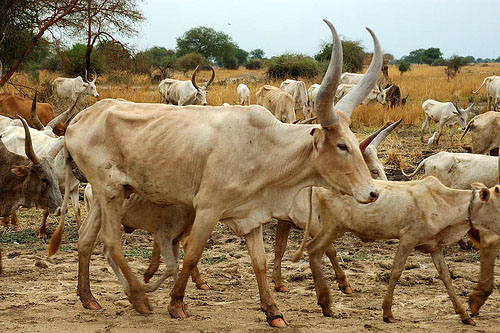By George Grant.

London, 13 November:
Reports have emerged from the southern town of Kufra that a possible foot-and-mouth (FMD) outbreak has begun . . .[restrict]to infect livestock there.
Suspicions were raised following the death of five cows on one of the farms, with at least two livestock barns feared to have been infected in the town.
Tests have yet to confirm the presence of the disease, but have been flown to Benghazi for analysis.
It is believed that the disease is likely to have been brought to Kufra by imported livestock, much of which comes from nearby Sudan, which has suffered numerous outbreaks of FMD disease in recent years.
Egypt is also suffering from a serious FMD outbreak, with an estimated 6.3 million buffalo and cattle and 7.5 million sheep and goats at risk, according to the UN’s Food & Agriculture Organisation.
Libya officially confirmed an outbreak of the SAT2 strain of FMD back in February this year, with the last reported outbreak back in 2003. That outbreak, which was identified in an area southeast of Benghazi, was of particular concern because the required vaccination is not widely used in Libya.
Two separate strains continue to circulate at several locations along the coast in the east and west of the country, with the government response including vaccination campaigns, movement controls and closing of livestock markets where necessary.
Foot-and-mouth is an highly infectious and sometimes fatal viral disease that affects cloven-hoofed animals. It can be spread by infected animals through aerosols, through contact with contaminated farming equipment, vehicles, clothing or feed, and by domestic and wild predators.
Because the virus can rapidly evolve, vaccinating against FMD is difficult, and infected animals often need to be culled to prevent further spread of the disease.
FMD has been known to infect humans, but this is extremely rare. [/restrict]









